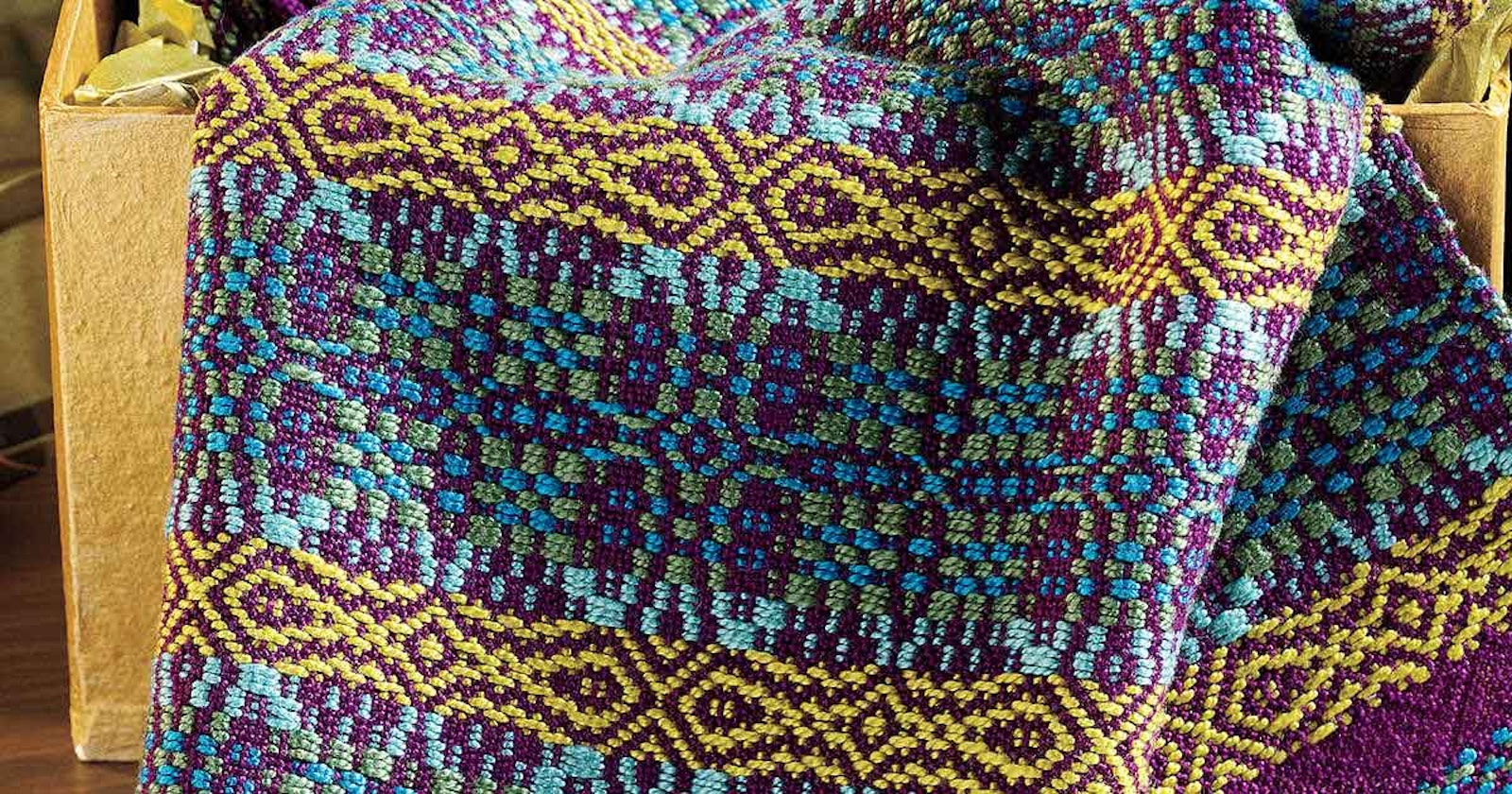Messy selvedges are the bane of many a weaver, new and experienced alike. For some of us, our selvedges are covered in little—and, perhaps, not so little—loops. For others, we overcompensate and end up with way too much draw-in. And then some of us do a little of both, so our cloth seems to undulate along the sides. What is a weaver to do?
Some more-experienced weavers love to say, “Oh, don’t worry a whit about your selvedges, just keep weaving and, eventually, they’ll clean up.” This is a bit like the advice people gave me to “sleep when the baby sleeps.” Sure, in theory, it sounds good, but, in reality, it doesn’t always work as planned. Other people recommend getting an end-feed shuttle or a temple, but while that is truly good advice, not every weaver has the money to just go out and purchase new supplies for the sake of cleaner selvedges. My recommendation? Weave a project that requires you to fiddle with your selvedges.
Christina needed to use a special technique to keep her selvedges clean in her Pinwheels Redux napkins.
Overshot is a good, simple candidate for this. I recently wove a set of overshot scarves in Tencel and found myself having to fiddle at the selvedge nearly every pick. At first, it was annoying—I just wanted to throw and beat, throw and beat—but then I found it to be meditative. It became part of the process. Throw, fiddle, beat, throw. I thought back to all the other projects that required constant vigilance: my pinwheel napkins from the May/June 2014 issue of Handwoven. My version of Madelyn’s gorgeous black-and-white silk scarves in deflected doubleweave from the January/February 2007 issue. And, of course, my take on Pattie Graver’s simply stunning Bertha’s Towels.
What do these projects have in common, aside from my having to constantly mess with the selvedges? They’re all some of the most fun I’ve had weaving, probably because I couldn’t zone out—I had to be in the moment and focus utterly and completely on the cloth in front of me. Messing with the selvedges after nearly every pick made me more aware of my relationship to the cloth: specifically, how the ways in which I threw my shuttle or changed colors affected my selvedges. I became more confident with each and every pick, and, when I wove another, less-fiddly project, my selvedges noticeably improved.
So, if your selvedges are currently giving you fits as you long to be one of those weavers who can throw, beat, throw, I suggest you take a moment to sit back and embrace having to mess with your edges—to appreciate the simple, tactile joy of handling cloth on the loom. Don’t think of tugging on each little weft pick as an annoyance. Instead, view it as putting the perfect touches on your cloth, like a baker carefully arranging the fruit “just so” on a tart. Enjoy the moment and watch as you slowly learn from each careful, practiced movement. I think you’ll have a great deal of fun.
Happy Weaving!
Christina


